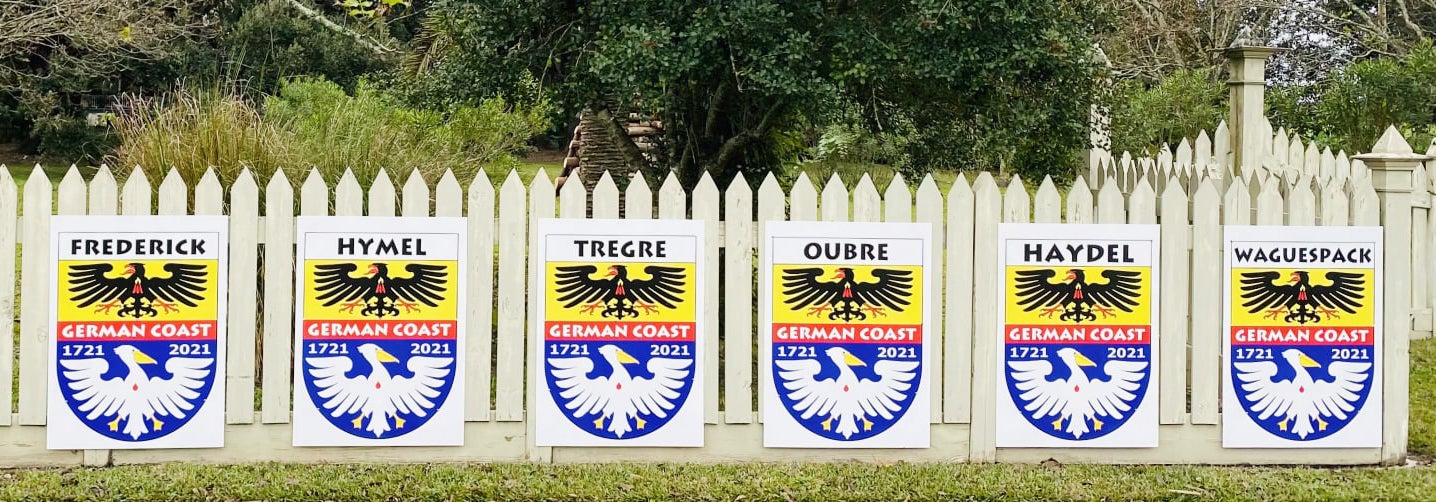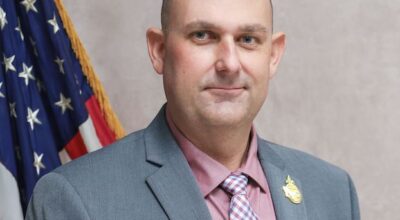German Coast celebrates 300 years
Published 12:00 am Saturday, January 23, 2021
|
Getting your Trinity Audio player ready...
|
LUCY — Three hundred years ago, Germanic families enticed by promises of great wealth and fertile farmlands settled along the West Bank of the Mississippi River in the area now known as Taft, Killona and Lucy.
The year 1721 marked the beginning of the German Coast. Jay Schexnaydre, president of the German-Acadian Coast Historical and Genealogical Society, explained that the early Germanic settlers were hard-working people who persevered through times of hardship, on both sides of the Atlantic Ocean.
Germany did not exist as a country in the early 1720s. Settlers came from different principalities and kingdoms located in regions now known as Germany, France and Switzerland.
“There were a lot of small kingdoms and principalities, and all of these people were fighting over religion. There was a lot of war. There were famines and economic downturns,” Schexnaydre said. “Most of these people living in principalities and kingdoms couldn’t own land. They really had no freedom.”
When Louisiana became a French colony, economist John Law sought to recruit hardworking people good at farming to come to the area. Posters went up along the Reine River valley in Europe, advertising Louisiana as a paradise of wealth and opportunity.
However, the settlers did not find Louisiana to be the paradise they were promised. Without proper provisions, they remained hungry. The new land came with diseases they were not accustomed to, and the swampy terrain presented a new set of challenges. Only the hardiest settlers survived.
While the German Coast was settled in 1721, the Germanic settlers were not the first people to inhabit the area now known as the River Parishes. Sub-branches of the Choctaw tribe occupied the region. The wandering Ouachas lived near present day Bayou Gauche. Additionally, West African people had been brought overseas early on by the middle-to-upper class French settlers who controlled land concessions along the Mississippi River. When the Acadians arrived in South Louisiana a few decades later, there were communities along the river from New Orleans to St. James Parish.
Settlements gradually spread out into Edgard, Montz, LaPlace and beyond, reaching south to Bayou Lafourche, Thibodaux and Raceland over time.
“After the first 100 years or so, there was nobody left speaking German dialect on the River because so many of them had married into French-speaking families that were also in Louisiana,” Schexnaydre said.
As time passed, many of the German Coast descendants did not realize they had Germanic backgrounds. Pronunciations of family names also gained a French flair. Spellings were also inconsistent during a time when much of the population was illiterate. Later on, the French spellings would become customary.
For example, the surname Wichner, pronounced similar to “Vic-ner” in a Germanic dialect, ultimately became spelled “Vicknair.” Some Germanic names were spelled phonetically, such as Zweig, which sounded like “twig” to French scribes and became translated as LaBranche.
While much of the Germanic culture meshed into French influence, Schexnaydre said there are some traditions that have been passed down through the generations of the German Coast.
While there is no concrete proof, Schexnaydre said the River Parishes’ bonfire tradition may have been inspired by the Germanic tradition of celebrating the winter solstice, which falls close to Christmas.
The COVID-19 pandemic has made it difficult to celebrate the tri-centennial of the German Coast. The German-Acadian Coast Historical and Genealogical Society is inviting members and the more than 1 million descendants of the first pioneers to purchase German Coast yard signs customized with their family name.
Signs are available for purchase in three sizes: Large (36 in. x 48 in./ $100), Medium (22 in. x 27 in. /$50) or Small (18 in. x 24 in. /$25).
Orders can be placed at gachgs.myshopify.com. All proceeds will go to the general fund of the non-profit organization.
Schexnaydre said the German-Acadian Coast Historical and Genealogical Society is helping fund the publication of a new genealogy book written by Albert Robichaux Jr.
Using old microfilm records, Robichaux previously published a 1997 book called “German Coast Families: European Origins and Settlement in Colonial Louisiana.”
Robichaux has continued his research throughout the years. As more records have been digitized across the world, Robichaux was able to compile information for a Volume II. The writing was completed Jan. 21, and Robichaux hopes to get the book to a printer by early summer.
According to Robichaux, Volume II provides genealogical information on 30 to 40 families, including but not limited to the Portier, Montz, Laiche, Picou, Cantrelle, Barbay and Achtizer families. Information in the book dates back to the late 1500s.
Pending COVID-19 vaccine availability and travel restrictions, the German-Acadian Coast Historical and Genealogical Society is also looking forward to a three-week tri-centennial trip to visit many of the hometowns of the German Coast ancestors in France, Germany and Switzerland.





